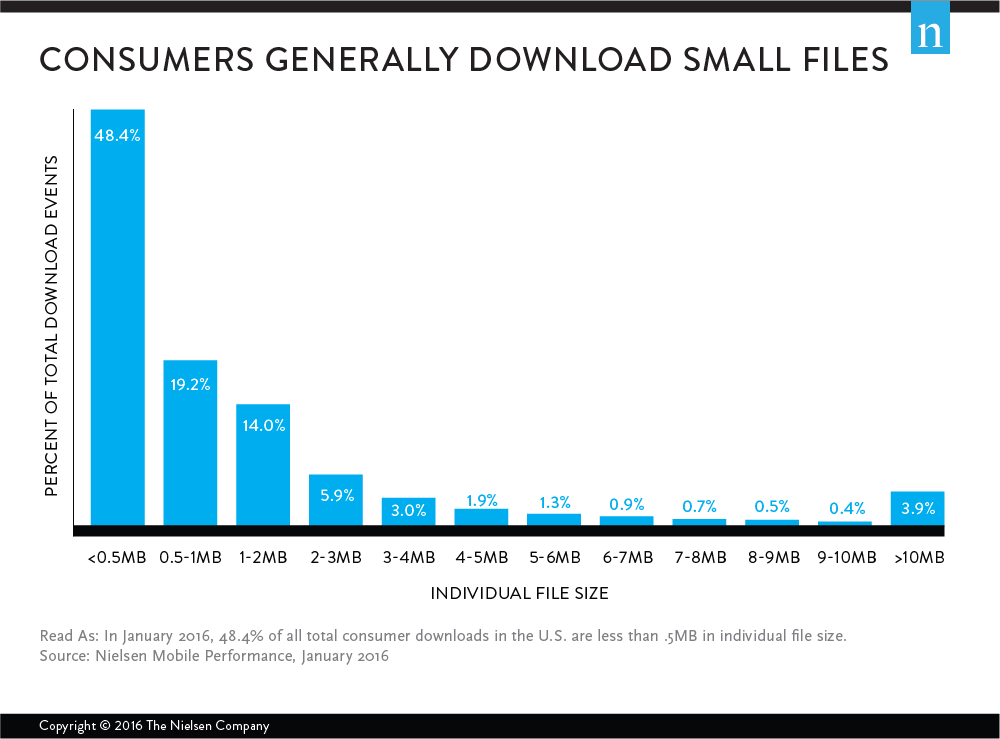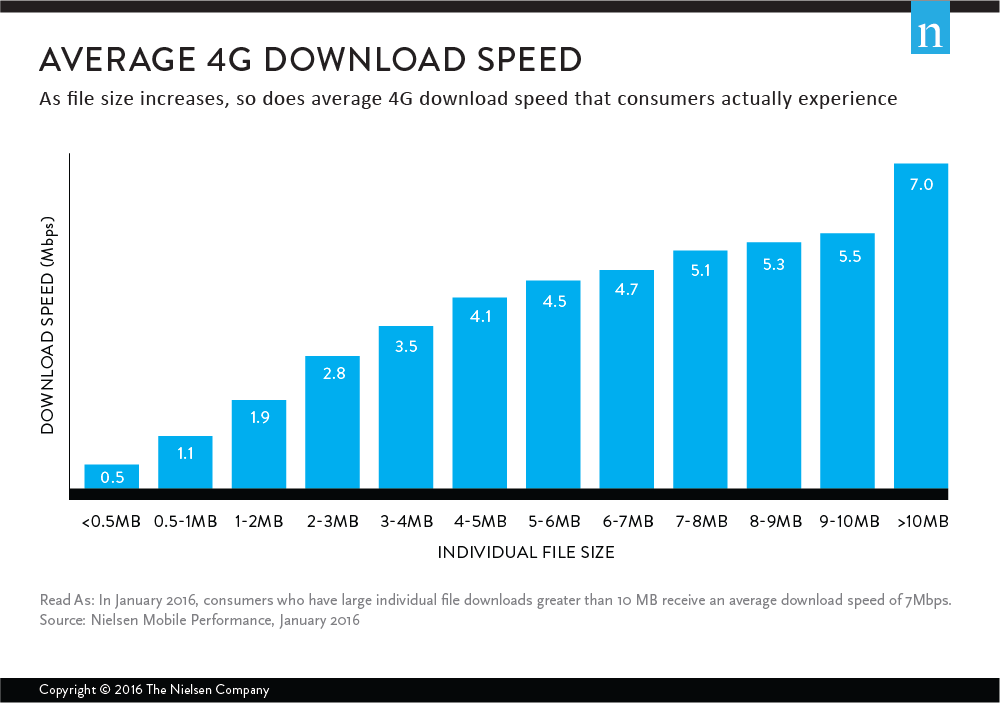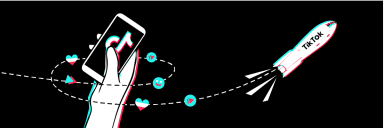It’s a fact. Networks are the backbone of every wireless carrier and are among the largest investments that a carrier company makes. A carrier’s network is also the most important reason a consumer selects and keeps a wireless provider. And there’s little room to hide from the subject, as consumers are regularly reminded through myriad wireless carrier ads that claim “blazing fast” speeds in an increasingly mobile world.
However, just as no two consumers consume media in the same way, no two consumers capitalize on upload and download speeds in the same manner. In fact, most consumers rarely experience or need the fastest speeds that networks can deliver. Even so, measuring the effectiveness of this critical resource is essential to the success of the players, marketers and advertisers in the industry.
According to a recent Nielsen analysis of Android usage, nearly 50% of all consumer downloads in the U.S. are less than 0.5 MB in size, and more than 80% are less than 2 MBs!

File size is driven by usage and behavior (sending and receiving files, streaming music and mobile video posting photos and video clips), but also by how the networks provide data for devices in small chunks. Based on actual consumer usage, less than 4% of all downloads are larger than 10 MBs.
The analysis found that video streaming services have the highest average downloaded file size per major application, while messenger apps have the lowest.
And when it comes to speed, size matters—file size that is!
A carrier’s network and the speed it delivers is akin to a freight train building momentum. A train pulling out of a station starts slowly and takes some time to reach its maximum speed. Networks operate the same way. When consumers begin to download, say, a song or an application, the network begins to send data almost immediately. Once the connection is made, the initial transfer speeds are low. That’s because it takes a little time for the network to spool up and deliver more amounts of data. That’s when the network can actually deliver those fast, maximum speeds that they’re capable of.
The size of the download is correlated with a network’s ability to deliver data to eager consumers. The larger the file size, the longer the download, and the more time the network has to pump data faster to the mobile device.
As download file size increases, so does the average 4G download speed that consumers actually experience. So how fast do speeds need to be for consumers?

For the median file size of 0.52 MB, networks don’t have time to deliver super-fast speeds. Consumers do experience faster speeds for files with larger sizes, big downloads, streaming, etc., but it’s rare for consumers to actually experience them because most of the files they download are too small.
What’s really important to consumers then? The fastest speeds for large file sizes that are rarely used? Or, fast speeds for the file sizes consumers more often use (smaller than 2 MBs) and better coverage of 4G? And do they care about the speeds carriers are actually capable of?
“The Industry is slowly waking up and realizing that even if carriers are capable of delivering incredibly fast speeds, it’s what actually happens on mobile devices in the real world that’s important to consumers, and, by extension, the carrier’s bottom line,” said Amilcar Perez, Managing Director of telecom at Nielsen.
It’s critical to measure the experience that consumers have on their networks and benchmark the speeds that carriers actually deliver. Just because a network is capable of a fast speed doesn’t mean that’s what consumers are actually receiving.
Today, consumers are engaging in activities that are primarily comprised of small file size transfers. However, once activities such as live mobile video viewing becomes more frequent and desirable top speeds will become more important to their daily lives. When smaller files are in play, speeds will rarely be a factor. Consumers will really only experience faster speeds with larger files.
Methodology
Nielsen Mobile Performance measures 45,000+ U.S. Android smartphones. The unique count of panelists for this dataset is 28,297 because of filters applied among the top five carriers, on LTE/4G, and filtered for devices that have passed the Nielsen certification process to ensure only the most accurate data. The downloads tend to be large in size (10 MBs or more) in order to max out the network and measure peak speed. Nielsen employs passive on-device measurement. We test the true, complete consumer experience, using real world methodologies.


